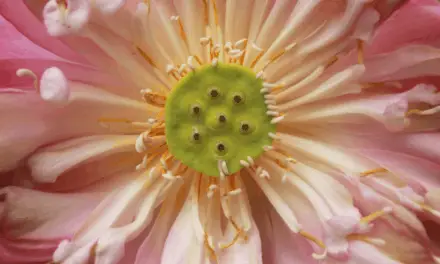When you keep plants in your home, backyard, or greenhouse, it isn’t unusual to spot a cluster of what looks like small cotton balls when you lift up a leaf.
These are tiny sap-sucking insects called mealybugs.
They spread fast, can do a lot of damage in a short amount of time, and are attracted to all kinds of plants and vegetation.
Table of Contents
What Attracts Mealybugs?

Soft-growing plants and plants that contain high levels of nitrogen are the most attractive to mealybugs, but they can infest almost any plant you own and often find their way into your home on a new plant you’ve just brought back from the garden center.
Mealybugs are attracted to warmer growing conditions such as the insides of greenhouses and warm homes.
Tropical plants are often a favorite of mealybugs because they thrive in those warm and humid environments.
They also like warm weather, and you are more likely to notice infestations during the spring, summer, and early fall months.
That said, it doesn’t mean you’ll never see them in winter.
Avoid overusing fertilizers to reduce the risk, and don’t over-water your plants either as this also contributes to an ideal mealybug environment.
These bugs can be difficult to prevent and even more difficult to get rid of, especially since you might not see them until they have already damaged your plant, but this guide will give you a better idea of what you are up against and what you can do to treat them.
Also Read: Are Mealybugs Harmful to Humans? (Or Pets)
What Are Mealybugs?
These are tiny sap-sucking insects that belong to the family Pseudococcidae, and they are known to cause major headaches in homes, greenhouses, and gardens.
Mealybugs have mouthparts that are long and sucking, and they insert these into the plant to absorb nutrients, which can cause significant damage to the plant.
If the infestation is small, you might not notice significant damage right away, but with a more severe dose, yellowing of the leaves and a general decline in your plant’s health are very common.
The leaves may also start curling and look overall unhealthy.
In the United States, around 275 different species of mealybug are known to exist, and they attack all types of plants, trees, and fruits.
Many plant owners wonder how they got mealybugs in the first place, but it is something that is both hard to prevent and foresee.
How To Recognize Mealybugs
Adult mealybugs are easily spotted with the naked eye and tend to be approximately 1/10 — 1/4 inches long.
They are soft-bodied, oval-shaped, and segmented, and they have small and thin extensions coming out of the body which is sometimes mistaken for legs.
Once sitting on a plant, the mealies resemble small and soft cotton balls, and with time, they form clusters that are close to impossible to miss if you know what to look for.
These bugs do often attach themselves under leaves, though, and may go unnoticed unless you keep a close eye on your plants.
How Do Mealybugs Spread?
A problem with mealybugs is that they spread from plant to plant, and you can accidentally bring them into your home by purchasing an infested plant.
To avoid this – inspect all new plants carefully before taking them in, and quarantine the plant while treating it if you discover an infestation, or refrain from taking it inside your house or garden.
If you’re lucky enough to have pest-free plants, be very careful about bringing any type of new plant or vegetation into your home without fully inspecting or disinfecting it first.
How Fast Do Mealybugs Spread?
Mealybugs can spread fast and in just a couple of days, they can spread from one plant to many within your home.
Female mealies lay hundreds of eggs and they can be unknowingly spread to other plants by hands and gardening equipment.
Mealybugs themselves don’t travel very fast or far but if plants are in very close proximity to one another, these insects will travel from one plant to another.
How To Get Rid Of Mealybugs
You have more than one option when it comes to getting rid of mealybugs, and it is recommended that you get started as soon as you discover the first sign of these pests on your plants.
Wash Your Plant
A quick and easy fix for light infestations is simply to rinse the plant with water.
You may need to repeat this a few times to get rid of all of them, but it is a great technique for plants that are extra sensitive or when you want to avoid chemicals.
Use Insecticidal Soap Spray
Purchase one of the many products available, or make your own using a quality dish soap.
The mix should be weakly concentrated and sprayed directly onto the plant with a spray bottle.
Isopropyl Alcohol
If you opt for using rubbing alcohol to try and get rid of more persistent pests, make sure you test it out on one leaf first to see how the plant reacts.
Use only a small amount on a cotton ball, and opt for isopropyl alcohol with no more than 70%.
Neem Oil
Neem oil contains insecticidal properties and is safe enough to be even used on vegetables.
Neem oil will kill mealybugs at all stages and can be applied as soon as you notice an infestation.
Mix 1 teaspoon of neem oil with 1/2 a teaspoon of liquid dish soap and add to 1 quart of warm water and shake well.
It can then be sprayed generously all over your plant.
Try to use natural dish soap, such as Pure Castile liquid soap.
This soap doesn’t contain any antibacterial or degreasing agents, which can damage your plant’s natural defenses.
Natural Predators
Predators like the Cryptolaemus montrouzieri, Leptomastix dactylopii, and lace bugs can be used to naturally eliminate mealybugs.
Introduce these and they will deal with the problem.
This solution is better suited for an infestation in your greenhouse or garden, and not inside your home.
Is It Worth Trying To Save Plants That Have Mealybugs?
It is definitely worth it to try and save your plants that have been infested with mealybugs.
It’s really important to check your plants regularly because the sooner you identify and treat mealybugs, the easier it will be to get rid of them for good.
First, isolate affected plants from healthy ones and spray them down with neem oil rubbing alcohol or insecticidal soap.
Repeat the process once every 2 or 3 days and you will eventually get the better of the mealybugs.
Just be sure to spray underneath leaves and all the little nooks and crannies where these guys like to hide out.
When Should You Throw A Plant Away Because Of Mealybugs?
It’s rare that you would have to throw any plant away due to a mealybug infestation.
But when it happens, it’s usually large intricate plants with countless hiding places for tiny insects.
Sometimes bigger plants don’t respond to treatment and fare the worst from mealies.
If you have a large plant that is badly infested and not responding to treatment over a matter of months, it may be time to trash the plant – especially if there’s a risk of the mealybugs spreading to unaffected plants.
Final Thoughts
Mealybugs thrive in moist environments, which is a reason to avoid over-watering your plants or using too much fertilizer.
If you see any sign of mealybugs on your plants, it is best to deal with the problem as soon as possible, to avoid damage to your plants.
These bugs spread from plant to plant and a great measure of prevention is to carefully inspect any new plant you intend to bring into your home.
Use natural predators if dealing with mealybugs in the garden or in a greenhouse, and try rinsing your plants or using a spray to eliminate more stubborn infestations of mealybugs on indoor plants.




